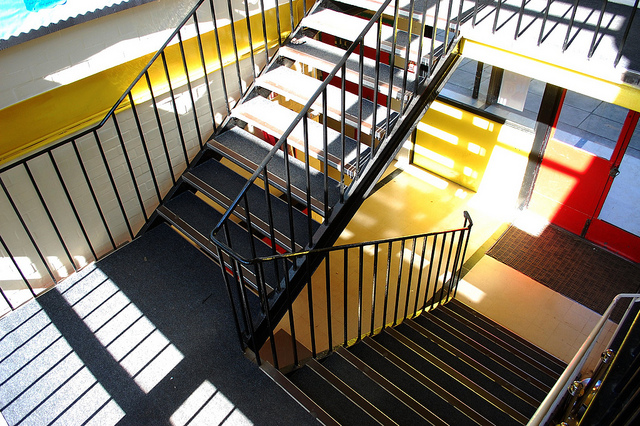To reserve your spot, CLICK HERE.
To reserve your spot, CLICK HERE.
2/24 Update: To see the 30-minute video, click HERE (or click on photo above)
Let’s be social! Like Beyond The Brochure on Facebook. We post a lot of stuff on Facebook that’s not on the blog! Are you more the email type? Get our posts in your in box by subscribing (enter your email in the “subscribe” box on the right sidebar of the blog. Or, buy the Second Edition of our book at Amazon.com or your local bookstores!
 Here’s an informative primer on what’s required to apply for private school financial aid by our good friend, Sandy Eiges of L.A. School Scout, an L.A. area educational consulting company. To see our interview with Sandy, click here.
Here’s an informative primer on what’s required to apply for private school financial aid by our good friend, Sandy Eiges of L.A. School Scout, an L.A. area educational consulting company. To see our interview with Sandy, click here.
We’ve come to that part of the private school admissions cycle where everything is coming due at the same time – teacher recommendations, head of school recommendations, transcripts, and for those of you applying for financial aid, tax returns. For those of you wondering whether you qualify for financial aid, wonder no longer. The answer is – maybe!
The truth is that every school has a different amount of financial aid available in any given year. Coupled with a different income ceiling per school, this makes it challenging to determine whether you qualify or not. Some schools focus on ethnic diversity in their financial aid calculations; some expand that to include socio-economic diversity as well. If a large school commits a sizeable percentage of their annual income to financial aid, then clearly they will have deeper pockets and will have more aid available than a smaller school might.
Applying for financial aid is a very challenging process. While I’ve covered this before, I’m reviewing the steps here. For some schools it’s not too late to submit a financial aid application. For all schools there is one part of the application due by February 1st – your tax returns.
Here are some guidelines you’ll need to know when applying for financial aid:
1. Have your economic house in some kind of order. Once you apply to a school they will ask if you are applying for financial aid. If you are, they will send you specific instructions. While the application isn’t due until February, and you can complete most of the application online, you will have to add supplemental materials. You will need copies of previous years’ tax returns – for some schools it’s one year, for others it’s two. The tax return for the current year will need to be completed and submitted in January, just to meet the deadline. You will need to itemize every expense and all of your income. If you are divorced, both parents’ incomes are used in the calculation, whether or not both parents are contributing to tuition – or even on speaking terms! Be aware that many schools have two aid applications – one you access online, and one that belongs specifically to a particular school. You will need to complete them both.
2. Expect to pay some tuition. Very few schools offer full financial aid these days. The more typical scenario is that if you qualify, the school will offer up to 2/3 of the payment. That means that you should expect to pay at least a third of the tuition. At the average L.A. private elementary school, tuition ranges from $18,000 – $25,000 per year. For middle and high school, it can go as high as $35,000 – $40,000 per year. You do the math!
3. Financial Aid applications are online. There are two main sites that process financial aid applications – the National Association of Independent Schools School & Student Services application (NAIS/SSS): http://sssbynais.org. “We estimate the amount you can contribute to school expenses and forward that estimate to the schools where you’re applying. It’s one form, for one fee, for any number of siblings, for any number of schools.” and FAST (the schools you are applying to will forward the link to their application). To repeat, once you enter your information they will estimate what they think you can afford. You will also be asked what you can afford. This isn’t the amount of aid you will necessarily receive, but it’s always a good idea to ask for what you need. Whether you use the FAST form or the SSS form, you will only have to submit one set of materials to each, which will be used for all the schools you specify. Both sites make it easy to upload supplementary materials, such as tax returns. Unfortunately if some of your schools use one form and some the other, you will have to fill out two separate forms. Just as with school applications, it might be easy to press “submit” – but don’t submit until you’ve checked and double-checked the accuracy of your answers, and especially of your numbers. And of course you should always keep a copy.
4. Watch the deadline! While you might be tempted to wait until your child is admitted to a school before submitting an application for financial aid, applications are due prior to admission. If you applied and got in, but only now realize that you really need financial aid, you can always ask – but it is highly unlikely that there will be any aid left. Aid normally goes first to faculty and staff for their children, then to current students at the school, and then to new acceptances. If you apply late, you risk losing any access to financial aid. For the most part complete financial aid applications, including current year tax returns, are due by February 1st. If you can get the application done early, then by all means take care of it. Then if all you need to do is upload one tax form on the due date, so much the better.
Let’s be social! Like Beyond The Brochure on Facebook. We post a lot of stuff on Facebook that’s not on the blog! Are you more the email type? Get our posts in your in box by subscribing (enter your email in the “subscribe” box on the right sidebar of the blog. Or, buy the Second Edition of our book at Amazon.com or your local bookstores!

Hope you’re having a wonderful summer! Finding the school that’s right for your child can be complicated (it was for my family). Spending some time thinking about the various types of schools over the summer can be helpful when you start your school search in the Fall. We cover school options in our book, Beyond The Brochure and we’ve written a series of posts about differences between progressive and traditional schools on the blog. Let’s face it, few of us stumble on the right private school in L.A. without giving considerable thought to this issue. Here’s a great piece by our friend Sandy Eiges of L.A. School Scout, an educational consulting firm.–Christina
In evaluating whether or not a school could be a fit for your child, you are going to be looking at how the school addresses a number of needs – academic, social, athletic, artistic, even moral. You are going to be judging how well the school does what it says it does, and whether or not what they do also matches what you believe in.
There are different types of schools out there, including: highly academic, gifted, developmental, special subject (i.e. art, science), traditional, religious, progressive. You are usually the best judge of your child’s ability to swim in a particular environment. While making this determination can be challenging, there are some areas you can look at in evaluating the school, and areas to look at in assessing what your child needs. While there are many additional factors to consider in thinking about a school for your child – geographic, cultural, financial, to name just a few – here are some questions to consider to help you on your way:
Your child and your family:
1. Does the type of school fit your family? Are you a loosely structured family or a more traditional family, or somewhere in between? More traditional families are generally more interested in traditional, academic, more formal schools; more loosely structured families might be more interested in “progressive” or developmental schools. You should see families like yours at schools that feel like a fit.
2. What is your child like? How do they respond to structure? Will they fare better in a larger physical environment or a smaller one? With more students in a classroom or fewer? Do they need a lot of one-on-one time or are they fairly independent?
3. How does your child learn? How does the school teach? Do you think they can accommodate his style of learning?
4. If entering Kindergarten, is your child ready-to-learn? Are they ready for a full school day, and the social, emotional and physical independence required in Kindergarten?
5. Does the school offer additional resources if your child is struggling academically? Does the school offer additional resources if your child is gifted?
6. If entering middle or high school, does the school offer enough classes and enrichment in the subjects of particular interest to your child?
Evaluating the School:
1. What does a typical day look like? Is a schedule posted for children and parents to see? Are parents invited into the classroom? Are there opportunities for parent involvement?
2. Does the school communicate with parents in a collaborative way? Is there a culture of openness in communication with teachers and administration?
3. Do children sit at assigned desks, either individually or in small groups?
4. Is there homework, and if so, how much?
5. Are there textbooks, and how often are these updated? Are they grade-appropriate? What other resources do students have access to?
6. Where do graduates tend to go on to middle school, high school or college?
7. Is there on-going professional development for the teaching staff? Is the school accredited?
8. Does the school share its curriculum with parents? Does the curriculum match the school’s philosophy?
So, for example, a highly academic school might see its role as providing foundational skills and knowledge, so that the student learns to perform at a high level of academic achievement; whereas a more developmental or progressive school might see its primary role as cultivating the student’s love of learning, and discovery of their own interests and abilities. Of course all schools should do both, but what they consider to be of primary importance will direct the curriculum, the instructional philosophy, and the feel of the school day.
What would your ideal school look like? If you can take a step back and put yourself in your child’s shoes, what do you think they would say their ideal school should look like? While you want to be comfortable with what is happening at school, ultimately the school should be a fit for your child.
L.A. School Scout™ helps families make informed and thoughtful choices about the schools that will best suit them. Our mission is to promote, encourage and applaud children’s enthusiasm for school and learning; take the mystery and anxiety out of the school finding process for parents; and provide families with comprehensive information on all of their educational choices. For more information about our services, please contact Sandy Eiges, L.A. School Scout™ at 877.877.6240, 310-926-0050. or sandy@LAschoolscout.com or visit www.LAschoolscout.com
Let’s be social! Like Beyond The Brochure on Facebook or Follow us on Twitter. Are you more the email type? Get our posts in your in box by subscribing (enter your email in the “subscribe” box on the right sidebar of the blog. Or, buy the Second Edition of our book at Amazon.com or your local bookstores!